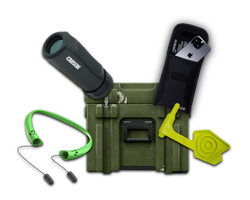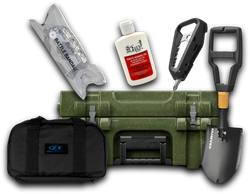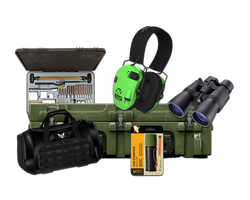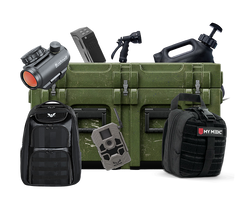How to Shoot Clay Targets: A Comprehensive Guide for Beginners
Table of Contents
- Introduction
- Understanding Clay Pigeon Shooting
- Essential Equipment for Clay Pigeon Shooting
- Safety First: Firearm Handling Protocols
- Mastering the Shooting Technique
- The Role of Practice in Shooting Improvement
- Conclusion
- FAQ
Introduction
Have you ever watched experienced shooters effortlessly break clay targets and thought, "That looks easy"? The truth is, while it may appear simple, successfully hitting clay pigeons is a skill that requires practice, focus, and proper technique. Clay pigeon shooting is not only a thrilling sport but also an excellent way to hone your shooting abilities.
With its roots tracing back to the late 19th century, clay pigeon shooting has evolved into a beloved activity enjoyed by millions around the world. This sport provides an exciting challenge and a fantastic opportunity for individuals to engage in outdoor activities, socialize, and develop their shooting skills. If you’re eager to learn how to shoot clay targets effectively, you’re in the right place.
In this guide, we’ll explore everything you need to know about shooting clay pigeons—from the basic equipment and safety protocols to advanced techniques that can improve your accuracy. By the end of this post, you’ll have a comprehensive understanding of how to break more targets and enhance your overall shooting experience.
Understanding Clay Pigeon Shooting
What Are Clay Pigeons?
Clay pigeons are round, saucer-shaped discs made from a mixture of pitch and chalk, designed to withstand high-speed launches. Measuring around 4.5 inches in diameter, they are crafted to mimic the flight path of a bird, providing an effective means for shooters to practice their aim and reflexes.
Types of Clay Pigeon Shooting
There are several formats of clay pigeon shooting, each offering unique challenges:
-
Trap Shooting: In trap shooting, clay targets are launched from a single trap house at varying angles away from the shooter. This format tests your ability to shoot at targets traveling away from you.
-
Skeet Shooting: Skeet shooting involves two trap houses that release clays in a crossing pattern. Shooters move through a series of stations, aiming to hit targets as they intersect.
-
Sporting Clays: Often referred to as "golf with a shotgun," sporting clays present shooters with a course containing different stations. Each station simulates various hunting scenarios, including rising, falling, and crossing targets.
Essential Equipment for Clay Pigeon Shooting
Choosing the Right Shotgun
Your shotgun is your most crucial tool in clay pigeon shooting. Here are some factors to consider when selecting the right shotgun:
-
Gauge: Beginners often start with a 12-gauge shotgun due to its versatility. However, 20-gauge shotguns are also popular among those seeking less recoil.
-
Fit: A shotgun should fit you well to ensure accuracy. A proper fit allows you to raise the shotgun naturally to your eye, improving your aim.
-
Type: Over/under shotguns (two barrels aligned vertically) are popular for their balance and ease of use. Semi-automatics are another option, providing less recoil but more complexity.
Ammunition
For clay pigeon shooting, smaller shot sizes like 7.5 or 8 are recommended. These sizes contain more pellets, increasing your chances of hitting the target. Standard 2¾-inch shells are typical for practice, and lighter loads can help reduce recoil during training.
Safety Gear
Safety should always be your top priority. Equip yourself with:
- Eye Protection: Protects against debris and glare.
- Ear Protection: Safeguards your hearing from the loud noise of gunfire.
Safety First: Firearm Handling Protocols
Before stepping onto the shooting range, it’s essential to understand and adhere to safety protocols. Here are some fundamental rules to keep in mind:
-
Treat Every Gun as if It's Loaded: Always handle firearms with caution and assume they are loaded, even if you believe they are not.
-
Point the Gun in a Safe Direction: Keep your gun pointed away from people, animals, or anything you do not intend to shoot.
-
Keep Your Finger Off the Trigger: Only place your finger on the trigger when you are ready to shoot.
-
Be Sure of Your Target: Always confirm that the area around your target is safe before shooting.
-
Use the Right Ammunition: Ensure that the ammunition matches your shotgun's specifications.
Mastering the Shooting Technique
The Importance of Stance
Your stance is the foundation of your shooting technique. Here’s how to position yourself effectively:
- Stand with your feet shoulder-width apart.
- Position your leading foot (same side as your shooting eye) slightly forward.
- Lean forward slightly from your hips, keeping your shoulders relaxed.
Grip and Posture
Your grip should be firm but relaxed. Hold the shotgun’s stock with your dominant hand and support the barrel with your other hand. Maintain an upright posture, with your head up and the shotgun snug against your cheek.
Aiming and Tracking the Clay Target
To successfully hit a moving target, you need to keep your eyes locked on the clay.
-
Keep Both Eyes Open: This enhances depth perception and field of view.
-
Lead the Target: Always aim slightly ahead of the clay’s path, allowing for the time it takes for the shot to reach the target.
Techniques for Improving Accuracy
-
Practice Your Swing: Before shooting, practice the motion of following the target without firing. This helps develop the muscle memory needed for a smooth swing.
-
Smooth Trigger Pull: Develop a fluid trigger pull to avoid jerking the gun, which can throw off your aim.
-
Follow Through: Maintain your swing after pulling the trigger. Stopping the gun movement can lead to missing the target.
-
Dry Firing: Practice your stance and movements without live ammunition to refine your technique.
The Role of Practice in Shooting Improvement
Becoming proficient in clay pigeon shooting requires dedication and consistent practice. Here are some tips to enhance your training:
-
Focus on Weaknesses: Identify the types of targets you struggle with and dedicate practice sessions to improving those skills.
-
Train with Instructors: Working with a qualified instructor can help you refine your technique and correct mistakes.
-
Alternate Practice: Mix practice sessions at the shooting range with dry firing and technique drills to reinforce muscle memory.
Conclusion
Shooting clay targets is an exhilarating sport that combines skill, focus, and the thrill of the chase. By understanding the essentials—from selecting the right equipment to mastering your shooting technique and prioritizing safety—you’ll be well on your way to becoming a proficient clay shooter.
Remember, consistent practice is key. Embrace each opportunity to train, learn from your experiences, and most importantly, enjoy the process of breaking those clays. As you continue to develop your skills, you’ll find fulfillment in the challenges and rewards that clay pigeon shooting offers.
Are you ready to take your shooting to the next level? Consider exploring Crate Club’s subscription services to access high-quality tactical gear, survival tools, and shooting accessories tailored to help you excel in your shooting journey. Check out our Crate Club Subscription Services and visit the Crate Club Shop to discover premium products that enhance your shooting experience.
FAQ
1. What type of shotgun is best for beginners? A 12-gauge shotgun is often recommended for beginners due to its versatility. However, a 20-gauge shotgun can also be a good choice if you prefer less recoil.
2. How can I improve my accuracy in clay pigeon shooting? Improving accuracy involves practicing your stance, grip, and follow-through. Regular training and focusing on specific weaknesses can also enhance your skills.
3. Is clay pigeon shooting safe? Yes, clay pigeon shooting can be safe if you adhere to proper safety protocols. Always treat firearms responsibly, wear protective gear, and ensure your shooting environment is secure.
4. How often should I practice clay pigeon shooting? Aim to practice regularly, ideally at least once a week. Consistent practice helps reinforce skills and improve performance over time.
5. Can I practice shooting clay targets without live ammunition? Yes! Dry firing is an excellent way to practice your stance and movements without the distraction of recoil and noise.
Share this article



